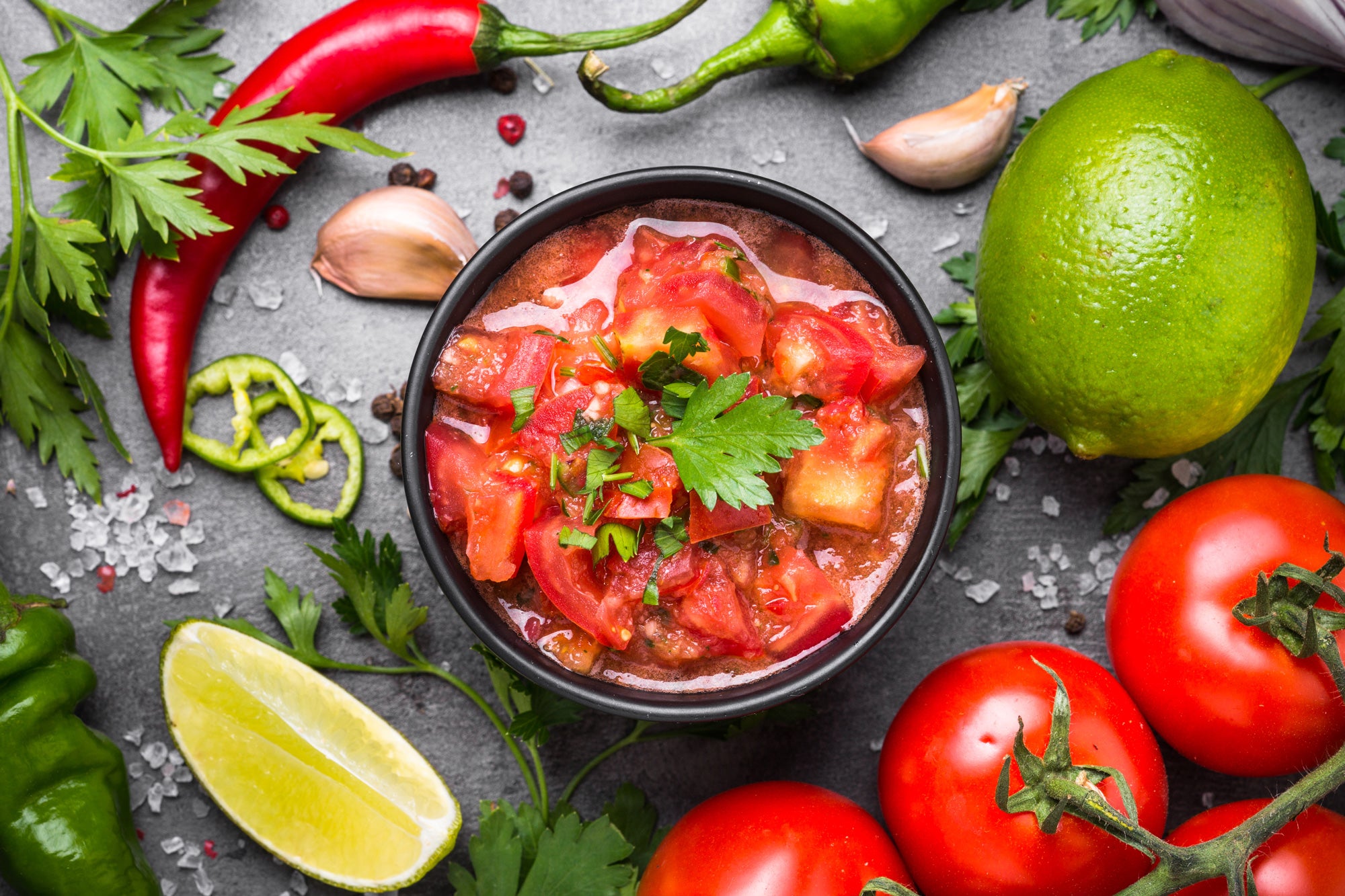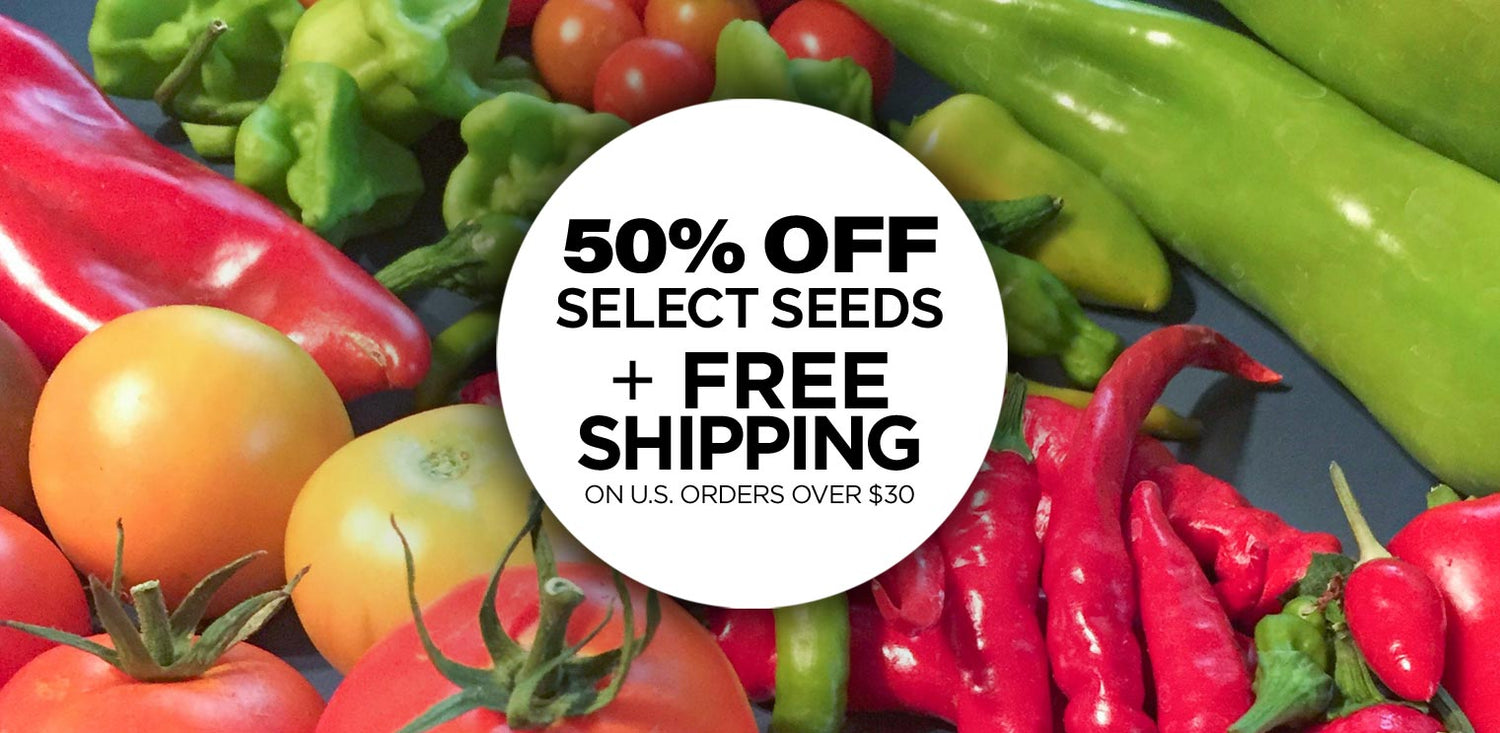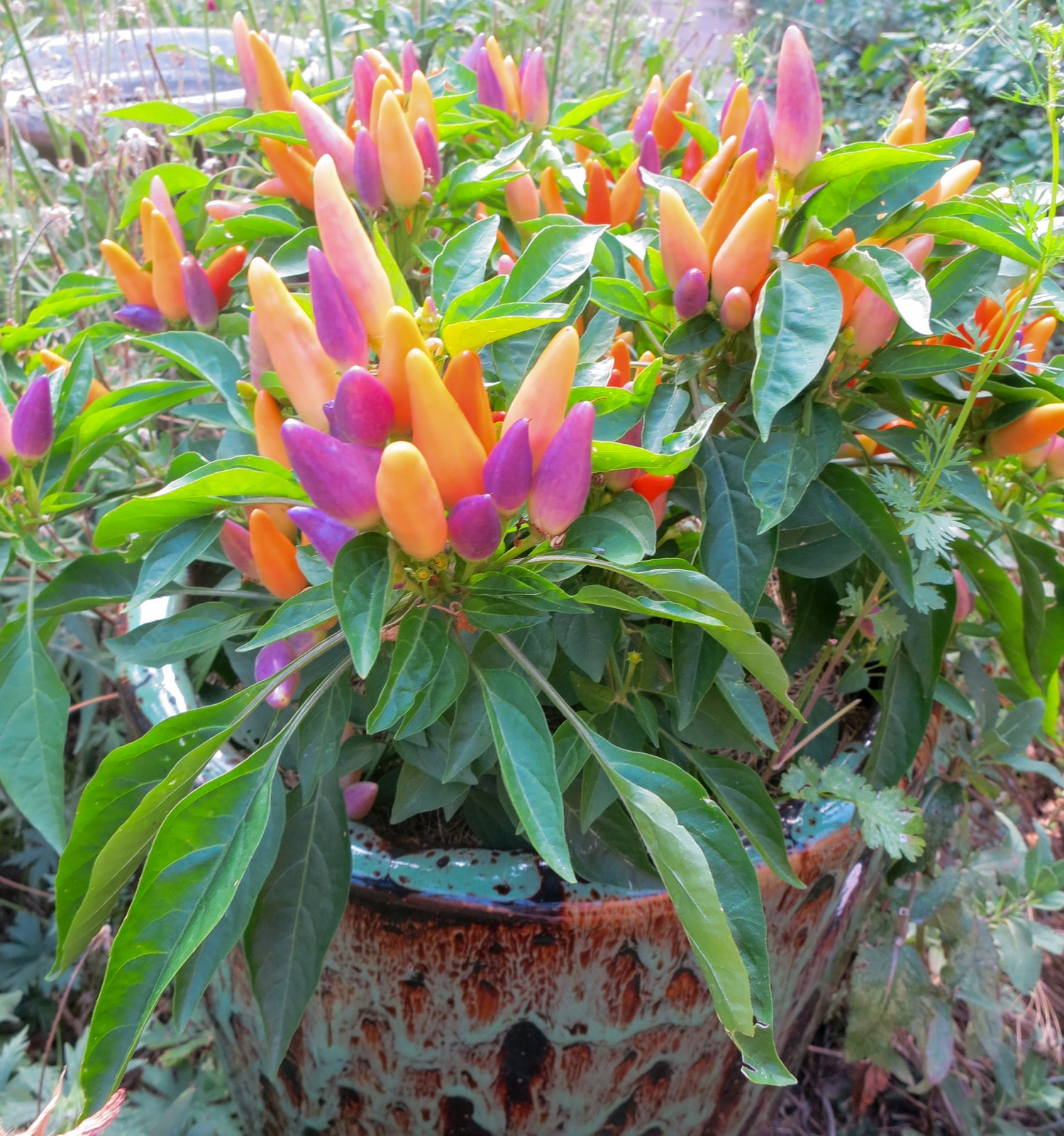Marigolds + Tomatoes:
Companion Planting
Flowers are good for Vegetable Gardens
They work as natural pest control and attract pollinators.

If you grow Hot Pepper Seeds, Hatch Chile Seeds, Sweet Pepper Seeds or Heirloom Tomato Seeds, it's important to also grow lots of flowers in your yard to help bring pollinators that will help increase your harvest. Because who doesn't want MORE tomatoes or peppers? We love to preserve our harvest by canning and drying peppers for year-round enjoyment. :)

Marigolds & Tomatoes:

Perennial Flowers, Herbs & Trees:

Shown above is a hardy geranium (pink blooms in the middle), and Goldenrod growing in the background. Goldenrod makes for great habitat for birds and pollinators. While in bloom, it's covered with bees and pollinators. The seeds are also enjoyed by birds in the winter months, and the stalks, if left over the winter, provide valuable nesting for native bees. We even like to use the stalks the following season for stakes to mark where we've planted things, or to help support plants.
You can also plant flowering and fruiting Trees and shrubs in your yard for additional food and beauty for you, and for shelter and food for the birds and the bees, too. Apricot trees bloom super early here in the West, so they are beloved as one of the first treats of spring by the bees. We also love having Raspberries, grapes and strawberries in our gardens. Growing lots of food providing plants that come back every year is a method of permaculture that is an easier way to grow food in your garden.

Annual Flowers & Herbs
Like peppers and tomatoes, many flowers are shorter-lived in climates with cold winters. But most of these plants produce seeds and can even re-seed themselves each year, taking some of the work out of your gardening to-dos. We love having these types of re-seeding annual flowers around our garden: Marigolds, Nasturtiums, Sunflowers, Bachelor's Buttons, Cosmos, Hollyhocks (which are also often perennial, but they do reseed). Sunflowers are especially nice as they provide a large landing pad for lots of pollinators and the birds absolutely love the seeds.
Herbs are also great, Basil, Cilantro and Dill attract beneficial insects and also often self-seed so you can easily have them growing in your garden every year. Cilantro seems to be particularly attractive to pollinators, and the cilantro flowers smell lovely in the garden. Don't worry that cilantro always goes to seed, you can still use the flowers and even the seeds in your recipes. And, the seeds are super easy to let dry and collect for sewing again for a new harvest. We usually have a pot of cilantro where we continually plant seeds in it so we have cilantro in every stage growing all the time. Basil seeds can also be saved easily, so if your basil flowers, let the bees enjoy it and then after the seed heads dry, shake the tiny black seeds into your hand and save the seeds to plant another batch!
Sunflowers usually resow themselves every year too, once you get them started (as long as you leave the seedheads). You can also save some of the seedheads each year and scatter seeds in the winter for spring germination and growing.





















